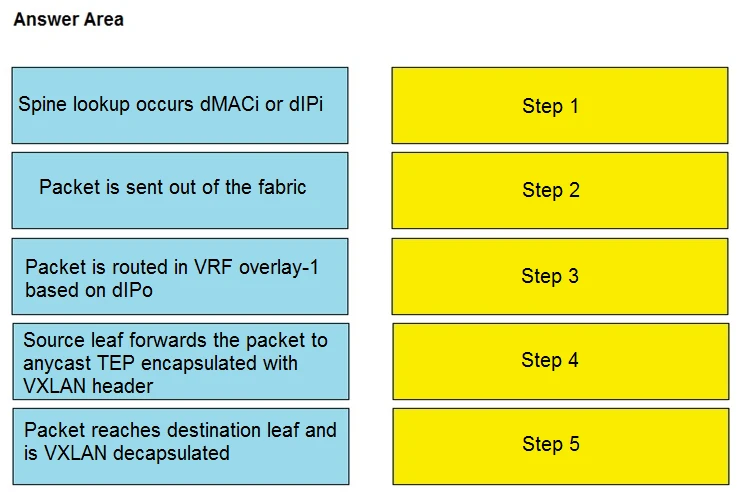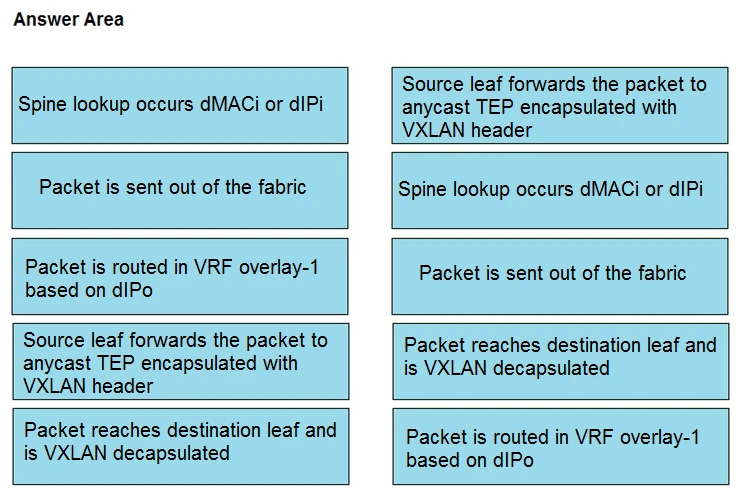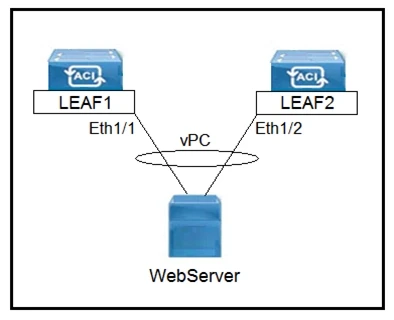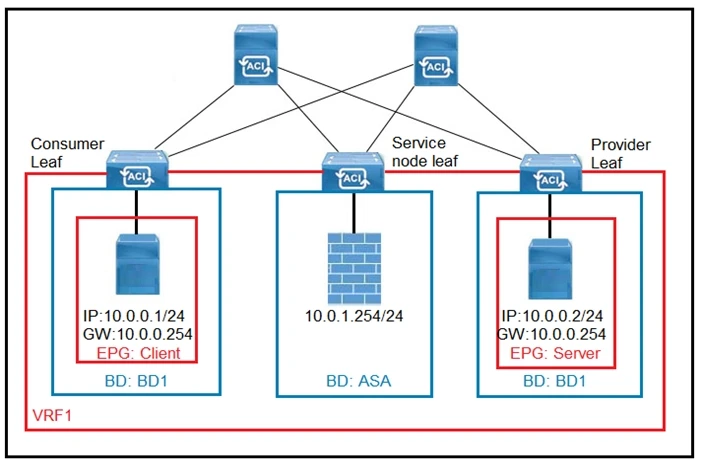A leaf receives unicast traffic that is destined to an unknown source, and spine proxy is enabled in the corresponding bridge domain. Drag and drop the Cisco ACI forwarding operations from the left into the order the operation occurs on the right.
Select and Place:



Refer to the exhibit. Which three actions should be taken to implement the vPC in the Cisco ACI fabric? (Choose three.)
To implement vPC in the Cisco ACI fabric, you need to select a common vPC interface policy group, common interface profiles, and common switch profiles. The common vPC interface policy group ensures consistency in the vPC configuration across interfaces. Common interface profiles allow the same configuration to apply to multiple interfaces, reducing the risk of configuration errors. Common switch profiles ensure that the switches participating in the vPC have the same baseline configuration. Individual profiles are not required for this implementation because vPC needs consistency across interfaces and switches.
To reassign a unique globally scoped pcTag to an Endpoint Group (EPG) that provides a global contract in Cisco ACI, you should configure subnets that are shared between Virtual Routing and Forwarding instances (VRFs). This action is necessary because sharing subnets between VRFs allows for route leaking, which is essential for global pcTag assignment, ensuring that the EPG can communicate across different VRFs while maintaining unique globally scoped tags.

Refer to the exhibit. What must be configured in the service graph to redirect HTTP traffic between the EPG client and EPG server to go through the Cisco ASA firewall?